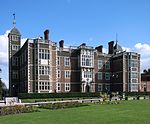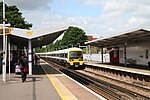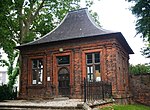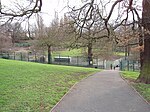The Valley (London)
Charlton, LondonCharlton Athletic F.C.Defunct rugby league venues in EnglandEnglish Football League venuesFootball venues in London ... and 5 more
London BroncosPremier League venuesSports venues completed in 1919Sports venues in LondonUse British English from August 2015

The Valley is a 27,111 capacity sports stadium in Charlton, London, England and has been the home of Charlton Athletic Football Club since the 1920s, with a period of exile between 1985 and 1992. It is served by Charlton railway station, which is less than a five-minute walk away from the stadium. An alternative route is the Jubilee line; exiting at North Greenwich, and changing for route 161, 472 and 486 buses, which stop outside the stadium.
Excerpt from the Wikipedia article The Valley (London) (License: CC BY-SA 3.0, Authors, Images).The Valley (London)
Floyd Road, London Charlton (Royal Borough of Greenwich)
Geographical coordinates (GPS) Address Website External links Nearby Places Show on map
Geographical coordinates (GPS)
| Latitude | Longitude |
|---|---|
| N 51.486388888889 ° | E 0.036388888888889 ° |
Address
The Valley
Floyd Road
SE7 8BL London, Charlton (Royal Borough of Greenwich)
England, United Kingdom
Open on Google Maps









